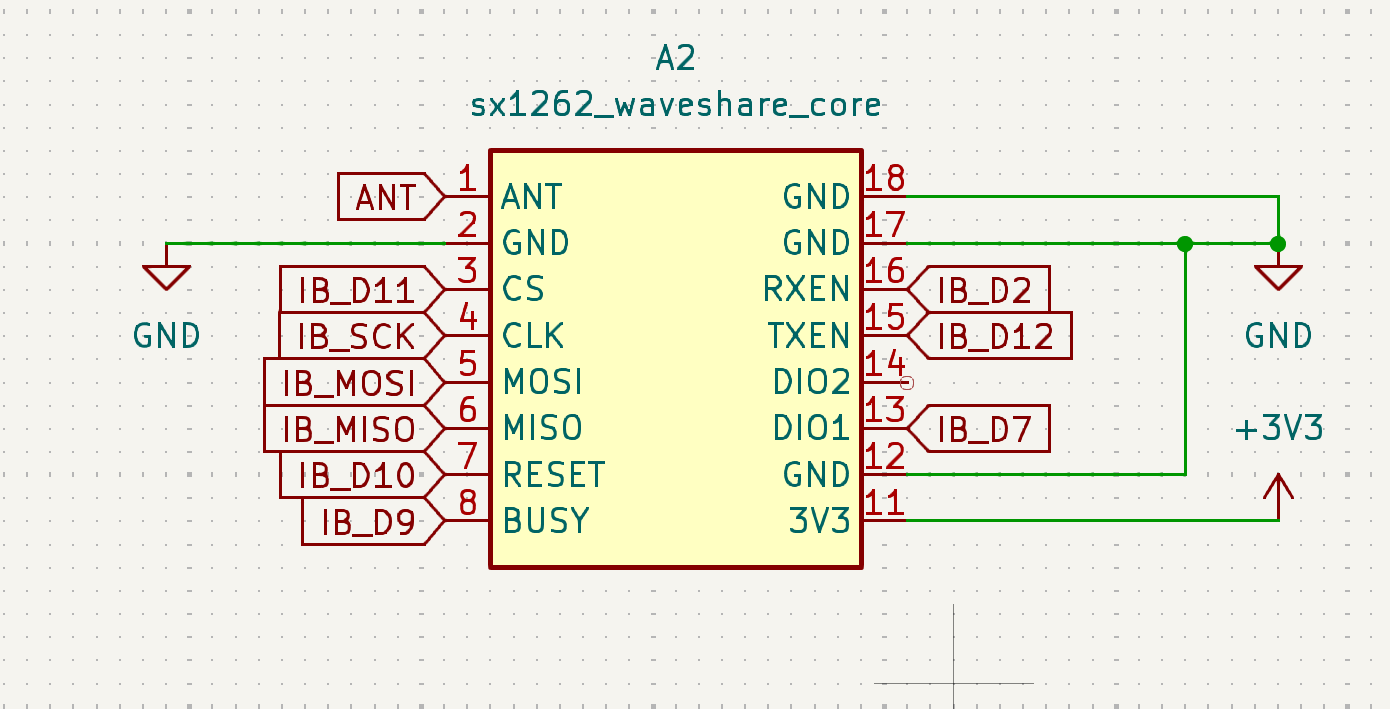Radio Experiments with EcoGather
Winter 2025 Seminar Topics #
We're planning a series of short, informal presentations and discussions around topics of interest to the group. In order to guide our exploration, there here are some basic characteristics of radio systems that can impact how a radio is used and what it might be useful for:
- Send / Recieve? Can you both send and receive information? For example, it can often be useful in an emergency to use a cheap, receive-only radio to monitor for news or announcements; while in other cases, two-way communication can be useful.
- Range? Over what range can the communication be achieved? Some radios have a range of a few miles; others can bounce signals off the atmosphere and travel around the globe.
- License Required? Can this type of radio be used without a license? If a license is required, can it simply be purchased for a small fee, or does the user need to pass an official exam?
Below are some examples of radios that fit in certain combinations of these categories:
Receive-only // Long-range // No license required #
In general, it is often useful in a grid-down scenario to be able to listen into ambient broadcasts (news, fire, police, emergency services). There are various inexpensive approaches to this, including:
- Scanners -- small radios that can receive local police, fire, and other broadcasts
- Software-defined radios -- inexpensive dongles that, when connected to a laptop, can provide an intuitive graphical way of exploring received radio signals
- Short-wave radios -- radios optimized for receiving broadcasts from around the globe
Send & Receive // Short-range // Easy license required #
These are relatively inexpensive radio technologies that allow for off-grid communication within a range of a few miles (or tens of miles, with repeater nodes). This would be useful for folks on a homestead, or perhpas within a relatively small town, to stay in touch.
- Meshtastic (enables phone to do off-grid, mesh-networked texting via an inexpensive add-on module; unlicensed)
- GMRS (audio communication; a $35, no-exam license is required)
- Walkie Talkies (audio communication; no license required)
Send & Receive // 100s of miles // Exam-based license required #
For off-grid coordination of logistics (food, water, transport) -- e.g. after or during a storm, flood, or fire -- it seems often to be useful to communicate within a range of a few hundred miles. A typical approach to this is to a technique (NVIS) that bounces radio signals off the atmosphere nearly directly above the broadcasting site, so that signals land within the desired range. The relevant bands (typically, HF), require a ham license (typically, the higher-level, 'General' license). Example technologies include:
- js8call; varac -- keyboard-to-keyboard live chat, with store-and-forward capability
- winlink -- ham radio-based email program
Sun 16 Feb 2025 05:53:50 PM EST
Meshtastic notes #
Link to a < $150 meshtastic repeater node here
Standalone meshtastic nodes here
Wireless paper here
Device test #
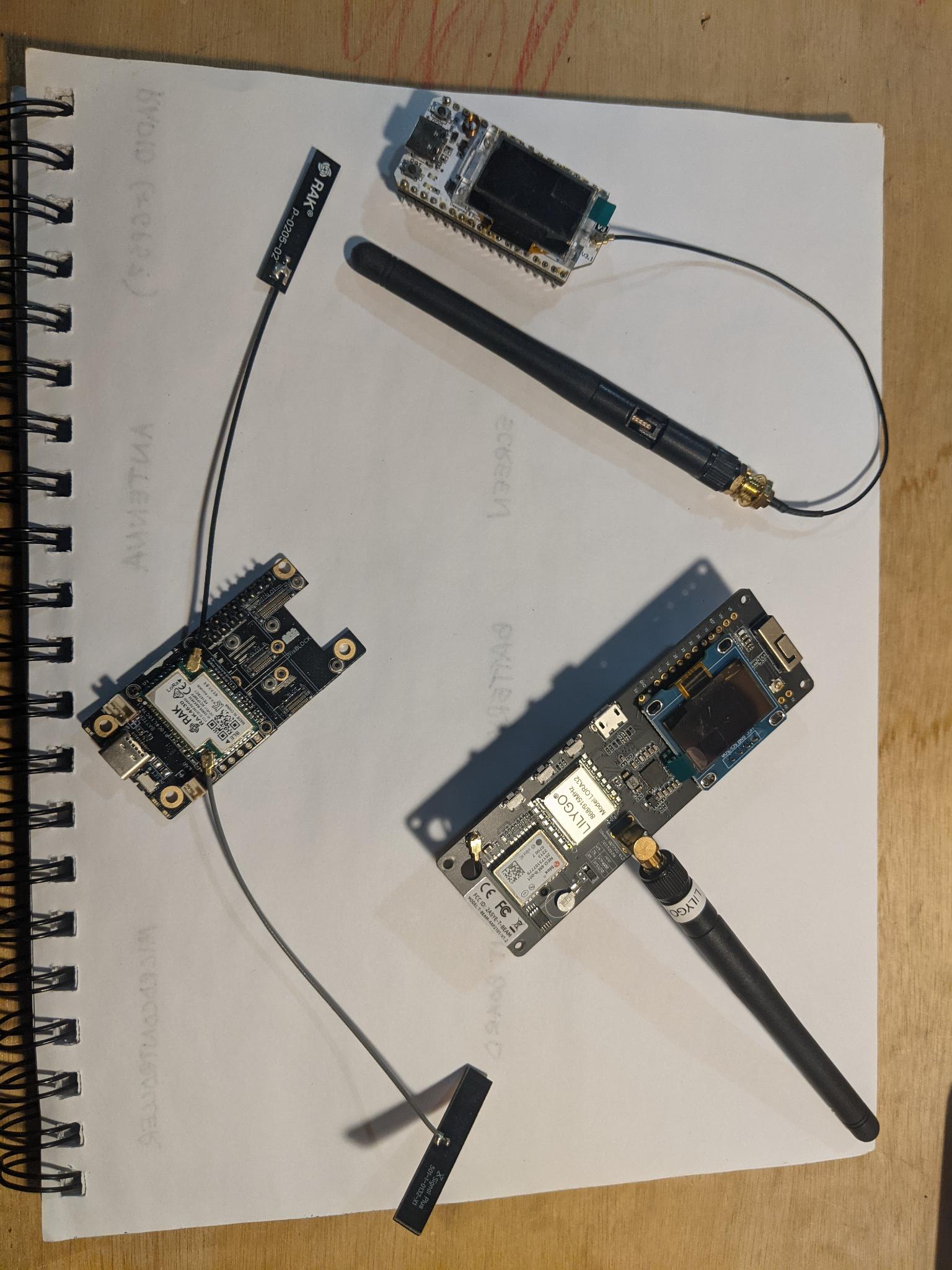
Explanatory / demo video here
Rak wisblock starter kit info here
What is the best device for meshtastic? here
Mon 17 Feb 2025 06:45:12 PM EST
Setting up Rak wisblock starter kit #
https://forum.rakwireless.com/t/physical-placement-of-oled-screen-on-wisblock-19007/11161
RAK Wisblock mini datasheet here
RAK 4631 datasheet here
meshtastic on itsy bitsy nrf #
https://gitlab.com/edgecollective/meshtastic-firmware-itsybitsy-nrf52-oled
still possible to diy a device -- bluetooth module for $13, radio module for $15, screen for $3, pcb + spare parts for $5 -- approx $36 in parts
meshtastic depth sensor #
Arduino tutorial for maxbotix sensor here
Maxbotix 7388 landing page and data sheet
Example Arduino code for software serial here
Rough code working for parsing:
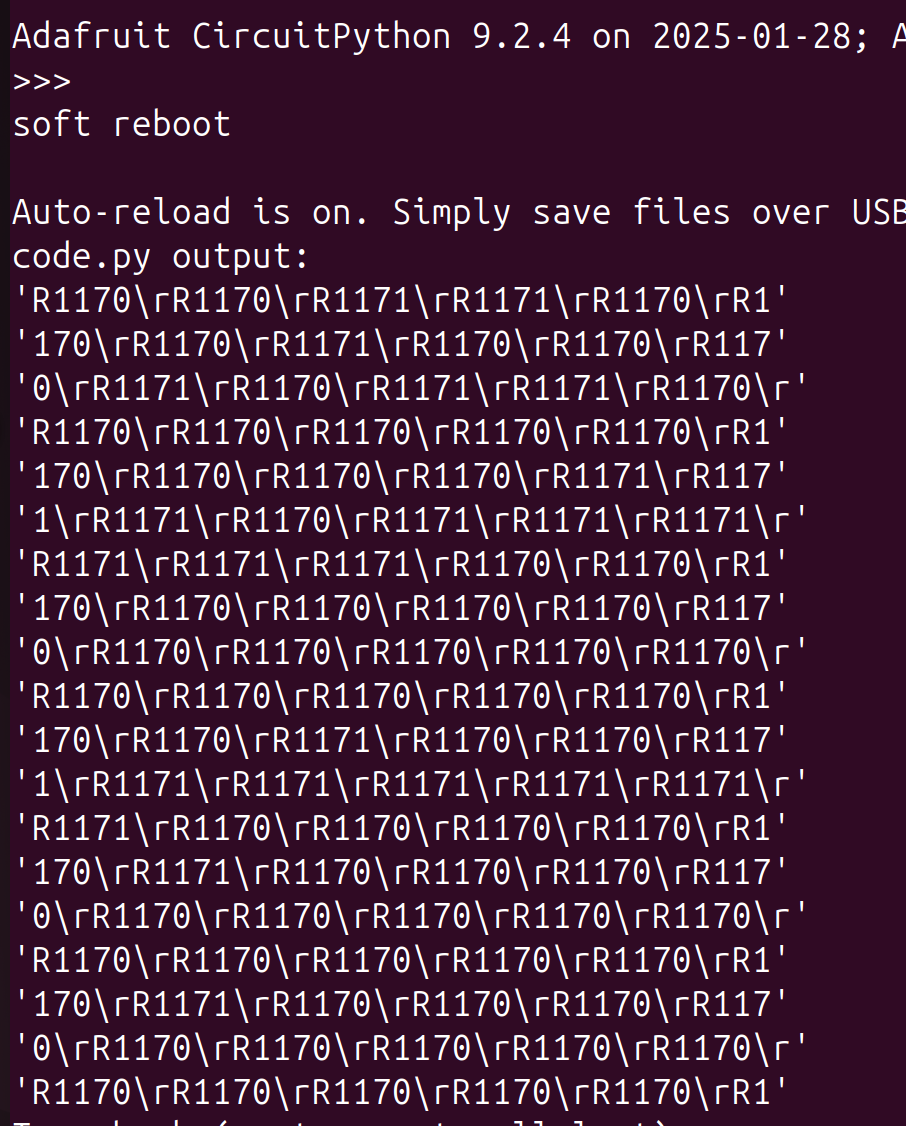
Good tutorial on additional uarts for Circuitpython here
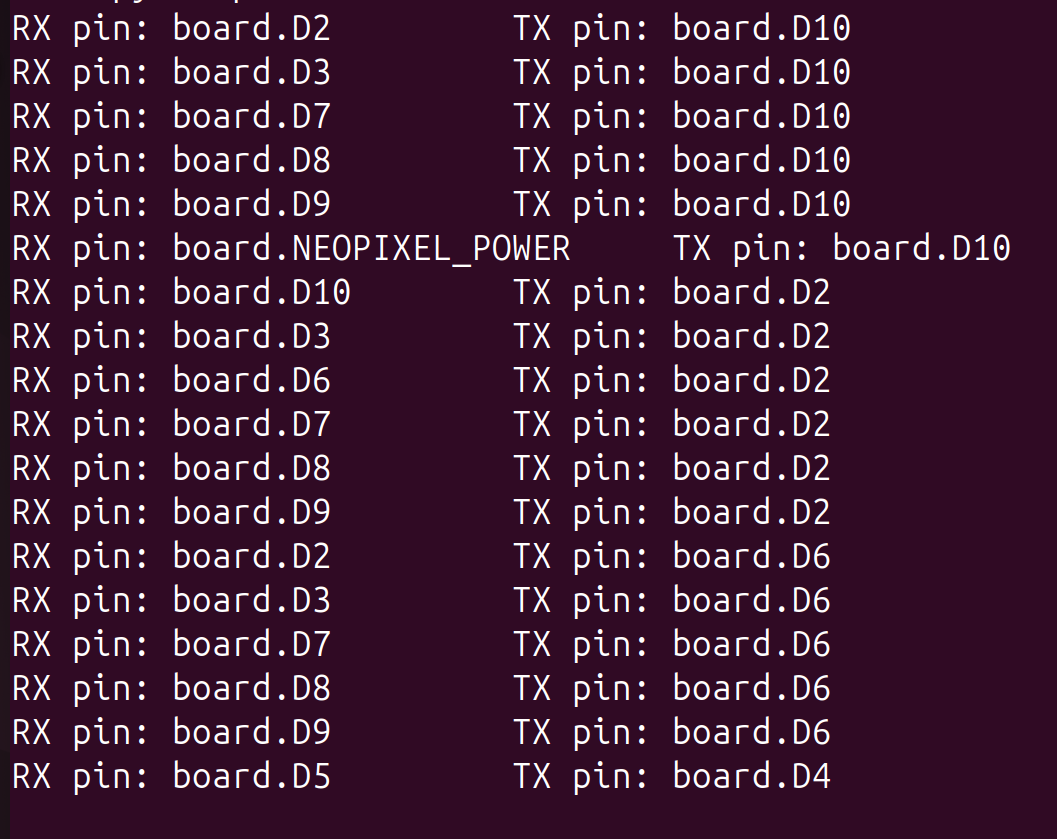
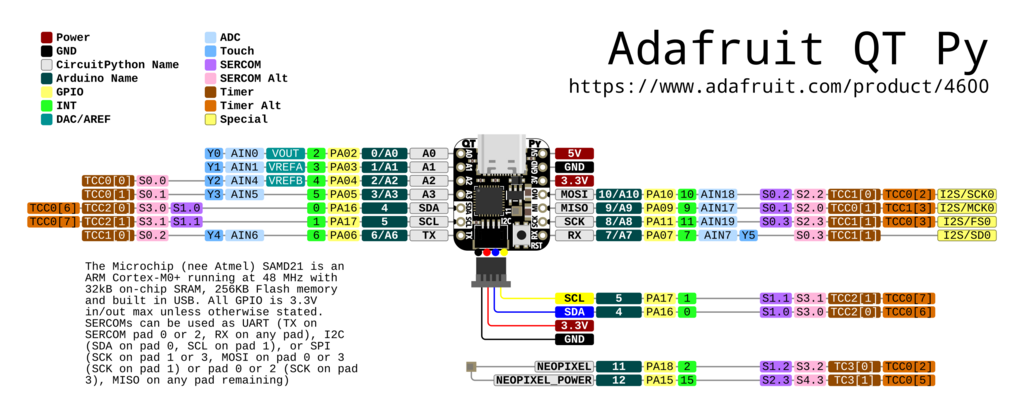
RX: D3
TX: D2
works on qt py
Using the Meshtastic cli here
Meshtastic serial module docs here
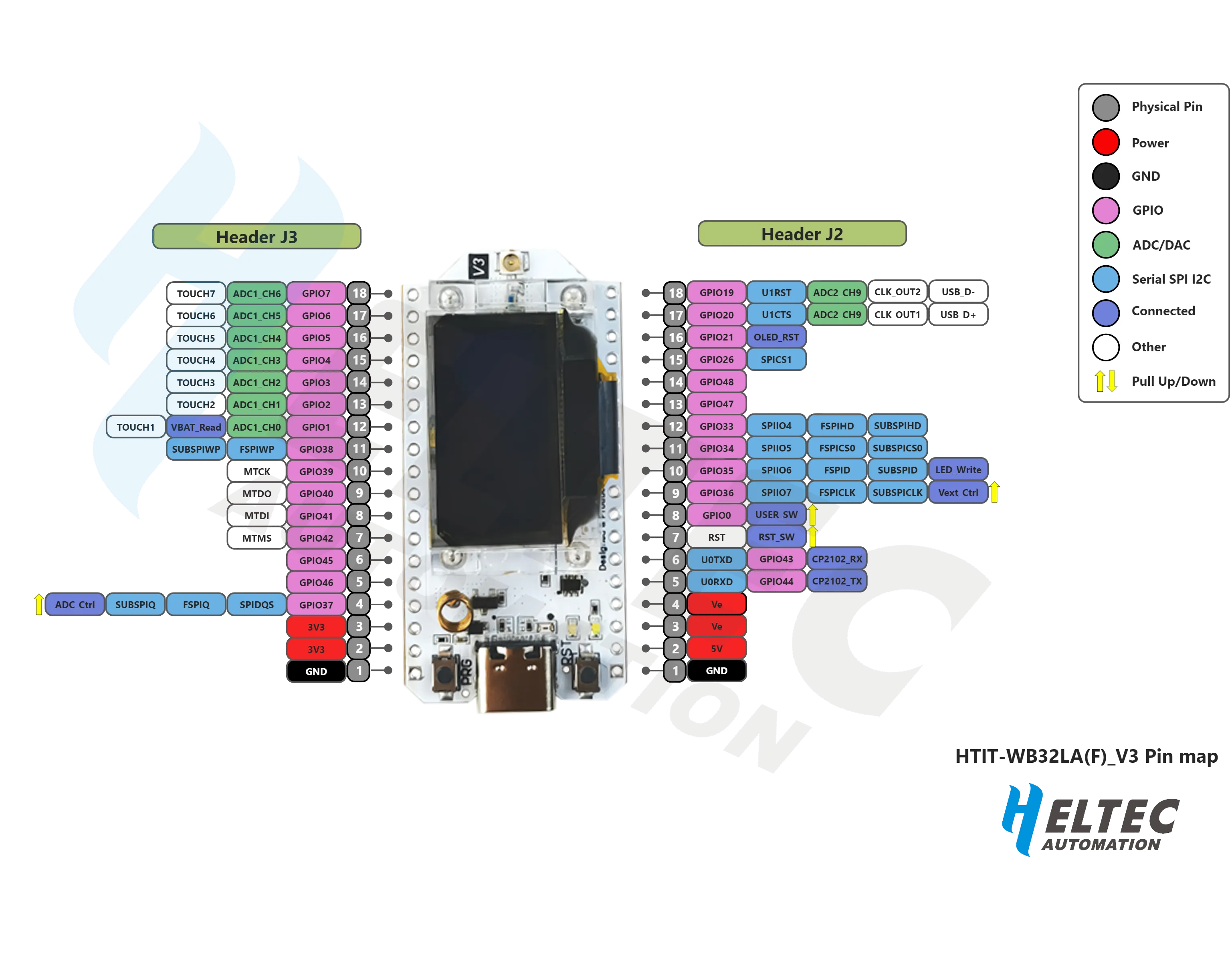
A nice guide to setting up serial on Meshtastic here
specs on 7388 maxbotix (datasheet here)
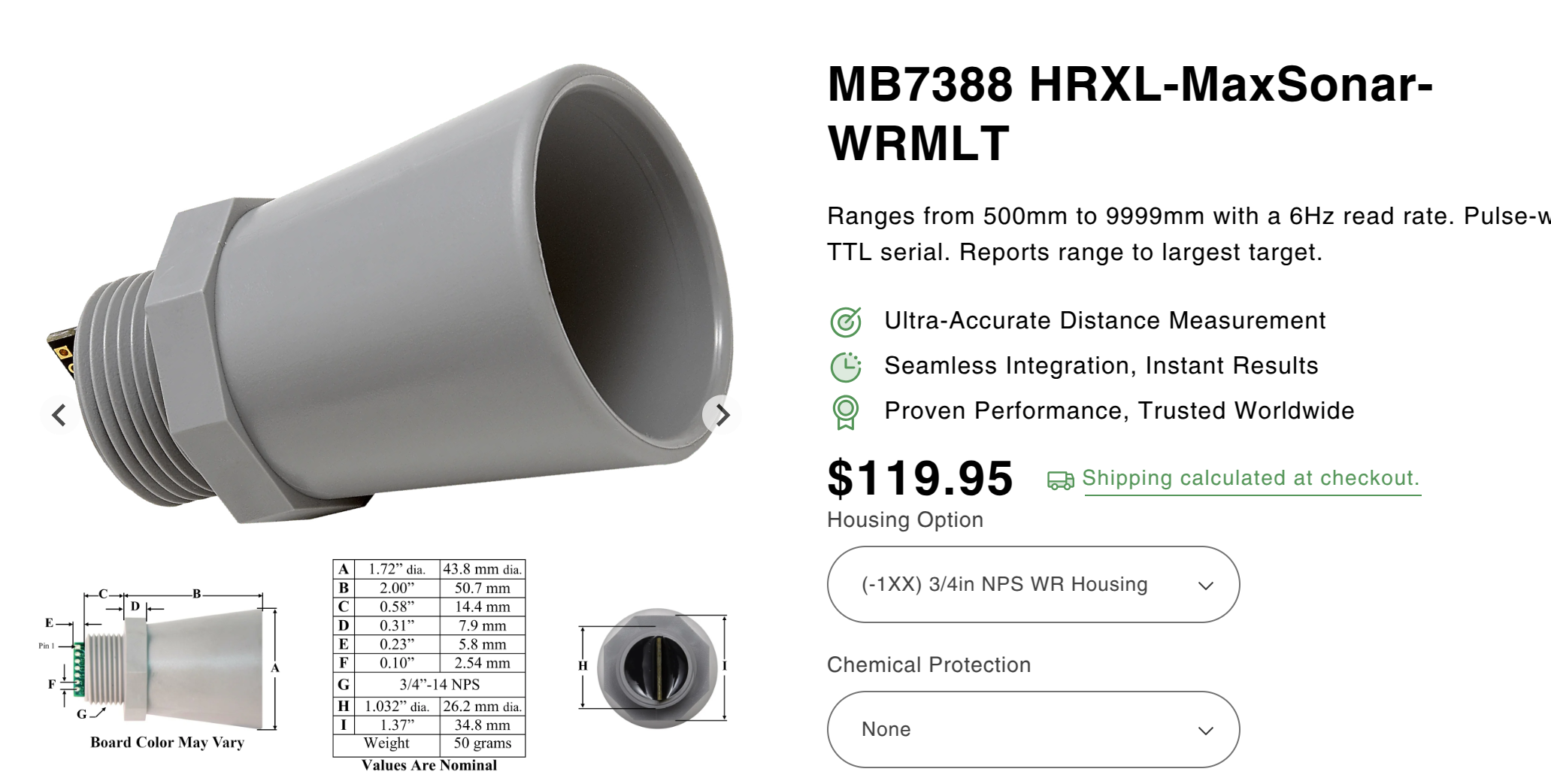
"The 1.5-meter sensors (MB7375 and MB7395) and 10-meter sensors (MB7363, MB7366, MB7368, MB7383, MB7386, and MB7388) use a scale factor of (Vcc/10240) per 1-mm. The distance is output with a 10-mm resolution. The analog voltage output is typically within ±10-mm of the serial output."
Wed 19 Mar 2025 03:28:43 PM EDT
RAK 19007 pinout here
Looks like we can access RX1 and RX2 on the Wisblock module as per this forum post
/*
- Serial interfaces
*/
// TXD1 RXD1 on Base Board
#define PIN_SERIAL1_RX (15)
#define PIN_SERIAL1_TX (16)
// TXD0 RXD0 on Base Board
#define PIN_SERIAL2_RX (19)
#define PIN_SERIAL2_TX (20)
meshtastic command line setup #
(meshty) dwblair@xps13:~/Documents/meshty/venv2/bin$ ./meshtastic --ch-index 0 --sendtext 'test data!'

Note: need to make sure that we've set the baud rate on the input
setting up the sensor meshtastic node #
- baud rate 115200
- rxd 15 and rx 16 on the RAK 4631
- serial.mode TEXTMSG
- default channel to 'depth' or somesuch
- serial.enabled 1
possible uart pin pairs for itsybitsy m4:
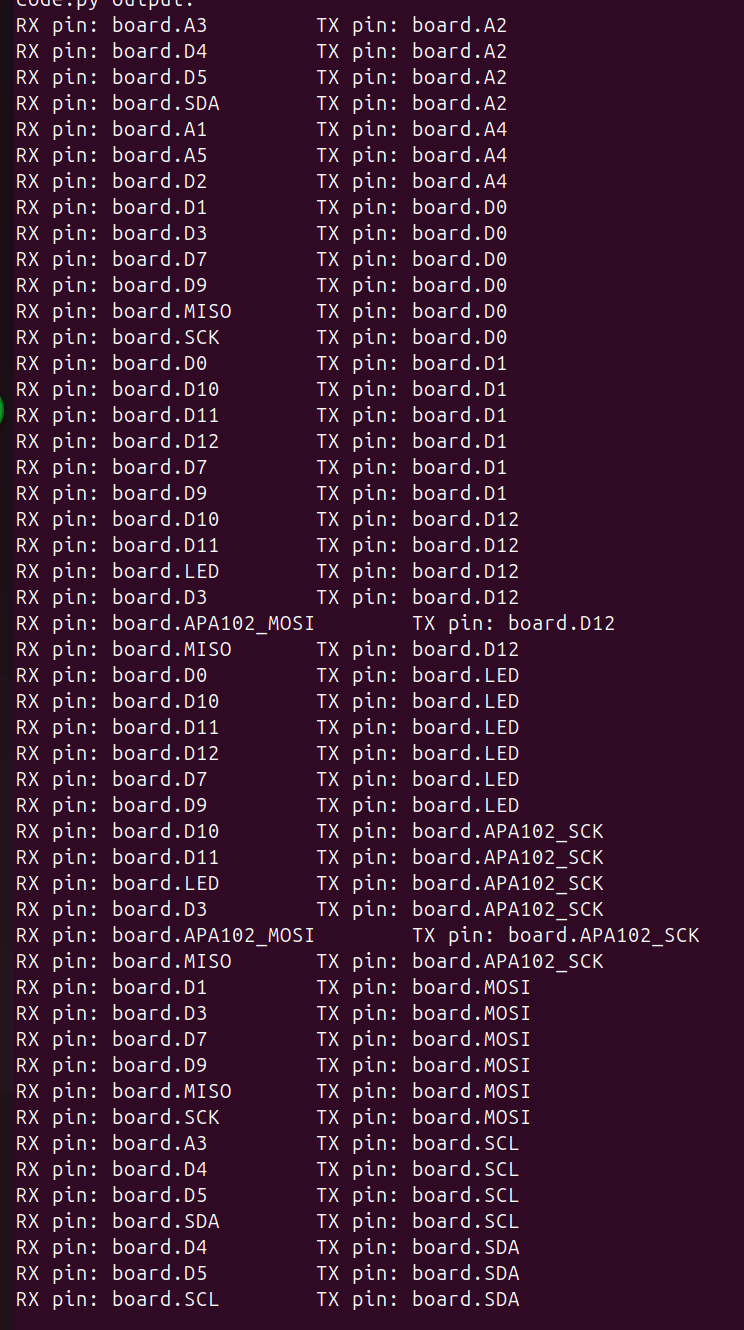
Setting up MQTT guide here
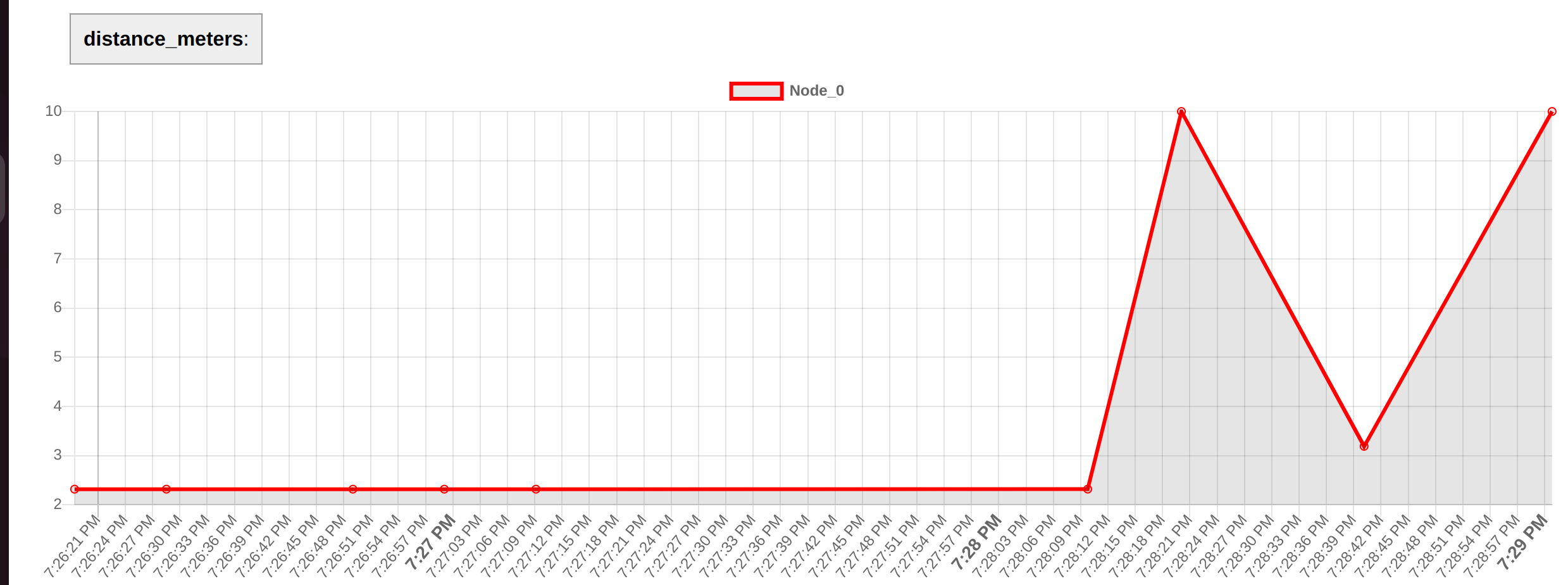
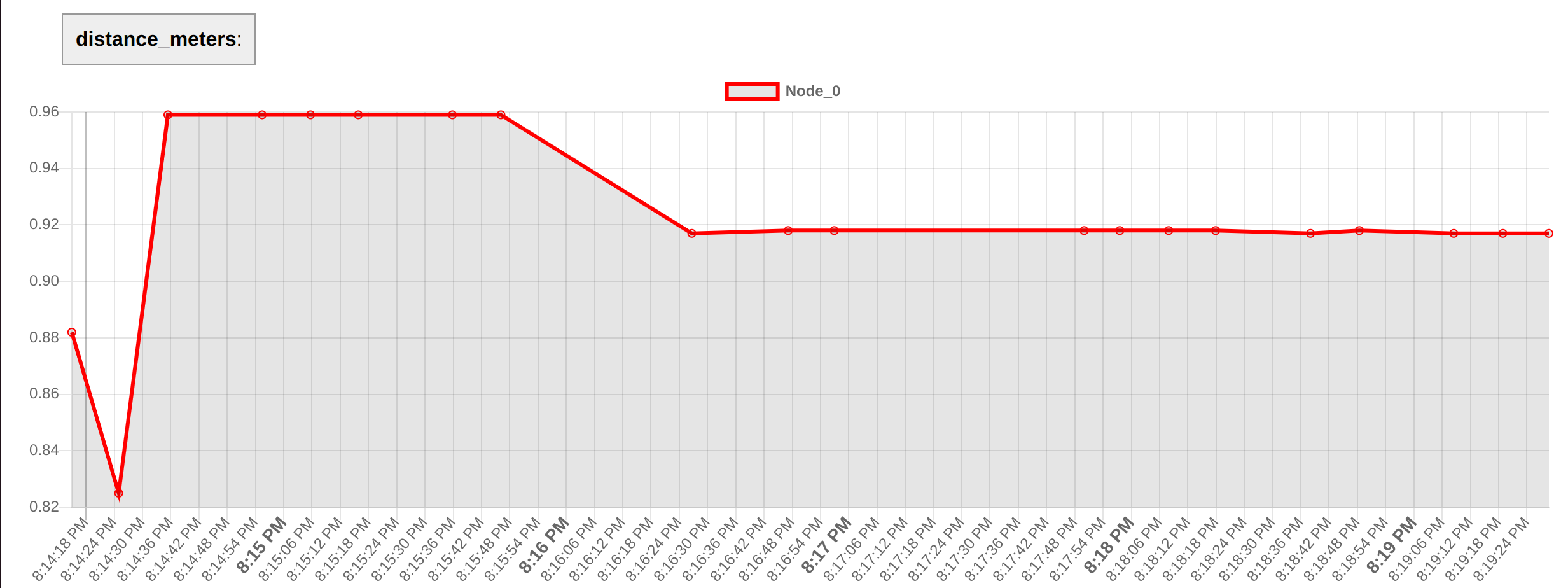
Wed 19 Mar 2025 08:27:15 PM EDT
Updated firmware and script repo, today's snapshot
https://github.com/edgecollective/mesh-depth/tree/6beac499442d1c69f761b0be1974393b7c57c208
- double_uart_itbm4_mesh_send.py -- code that runs on itsy bitsy m4 which reads uart from maxbotix sensor, then sends via another uart to RAK meshtastic node in TEXTMSG mode
- serial_gateway.py -- code for qt py m0 which gets data from a heltec and prints it to the serial port
- serial_read_bayou_post_generic.py -- python script for terminal, reads data from serial port and posts to bayou
Wed 19 Mar 2025 08:58:09 PM EDT
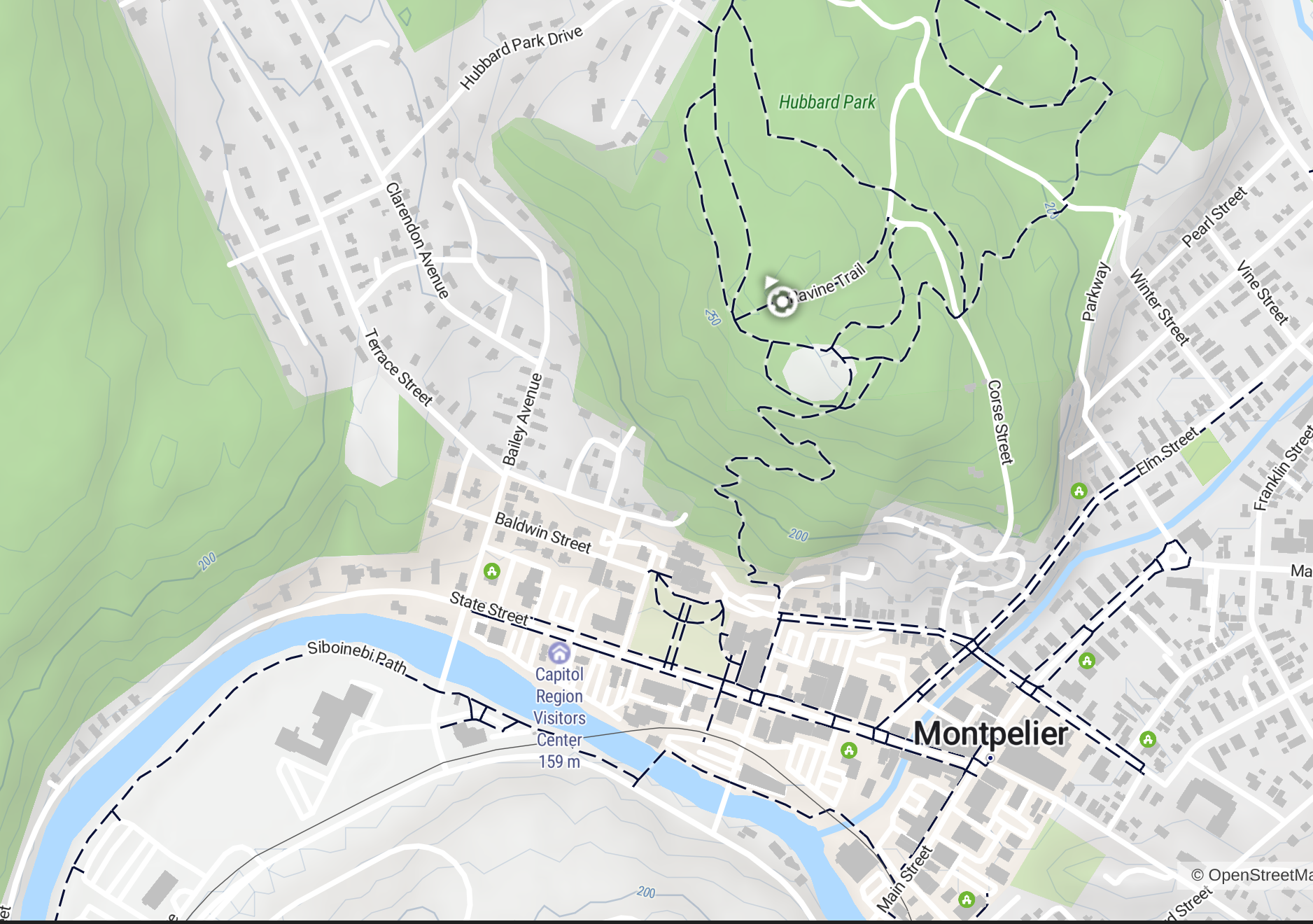
Sat 22 Mar 2025 09:33:06 AM EDT
RAK12500 WisBlock GPS module https://docs.rakwireless.com/Product-Categories/WisBlock/RAK12500/Datasheet/
RAK19007 datasheet here
Upshot: if place GPS module on Slot C, use i2c only, no UART conflict
can maybe also place on Slot A, which allows both uart and i2c? but then potential conflict, as the uart is listening on RX1 and transmitting on TX1
RX1 is the pin we're using to receive UART data and send on the RAK
So: hope for i2c mode for GPS module
Sun 23 Mar 2025 02:53:25 PM EDT
Okay, going to just to the MVP -- not worry about different battery chemistries or microcontrollers, yet.
I've determined that we can use an itsy bitsy m4 and an itsy bitsy nrf5280 with the same custom uart pins. Likely a rp2040 as well (I imagine the mux is v flexible on that chip). That's enough to start.
If not too complicated, will try to add the timer circuit, with option to have controlling micro + sensor sleep, or also entire circuit sleep.
base it on the sweet-p ...
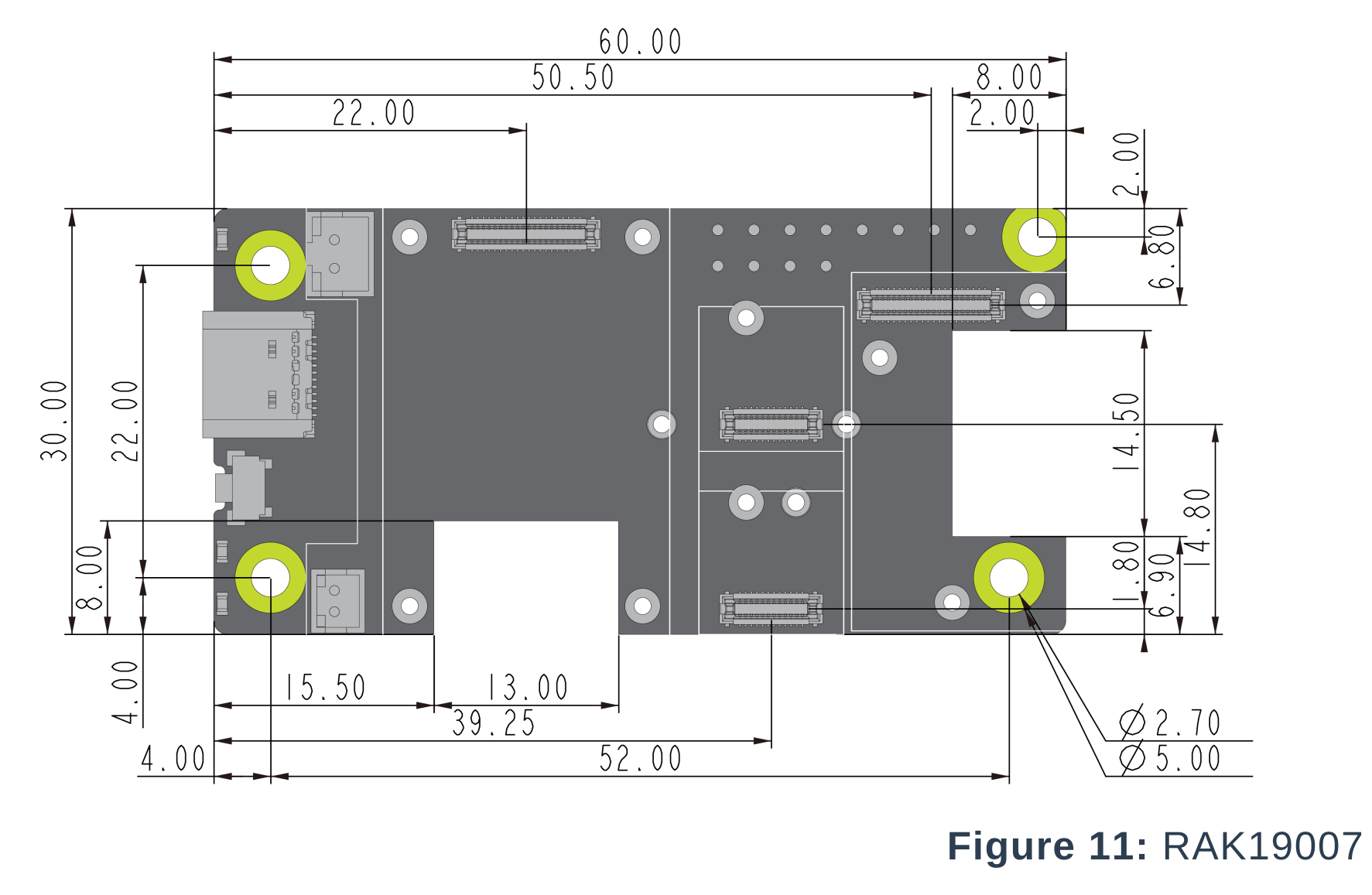
Power consumption on RAK19007 + RAK4631 here
-- from this discussion, looks like we shouldn't currently mess with the rak power input -- just use regular 3.7 rated lipos. meanwhile we can use a timer on the BAT pin from meshtastic to power the sensor and the micro separately.
should prototype this circuit first, though
discussion on how to power the rak4631 here
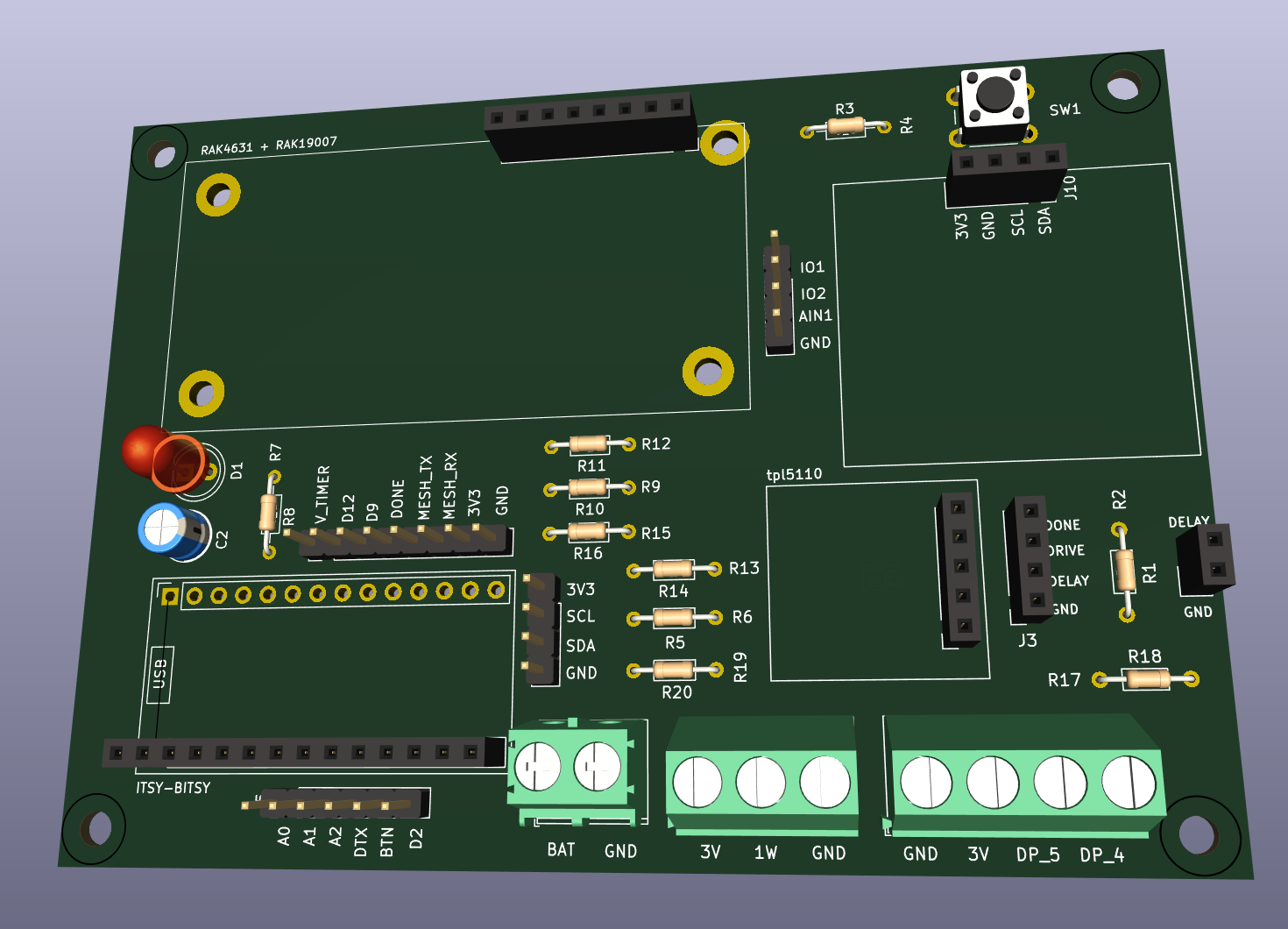
Video explaning the timer: https://photos.app.goo.gl/C4hNUPwVMvn81FZs8
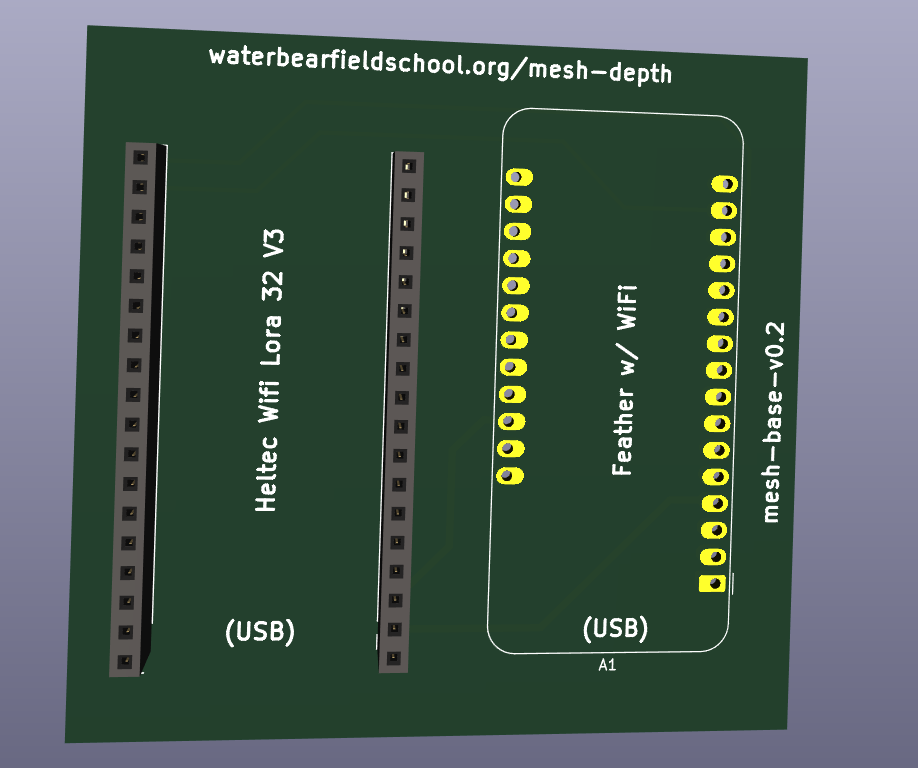
Wed 26 Mar 2025 07:42:07 PM EDT
rak 19007 -- can use USB or solar input to charge battery -- nice!

Sat 05 Apr 2025 09:07:42 AM EDT
Seeed studio has some low-cost nordic and lora chips ...
Lora chip avail (WIO-SX1262) for $5 on digikey here
Here's the description at Seeed of the module: link
Here's a TRACO power DC-DC that outputs 3.3V and 1A with max 36V and min 4.7V input link
Looks like the nordic has built-in power converters, see forum here
So: what about a board that allows for different battery chemistries, so that the system can be a repeater in cold weather / take different batteries?
Meshtastic nrf diy here
NRF52840 pro micro here
Ah! The proper term for it is the 'super mini' -- and Adafruit has Circuitpython for it! here
super mini pinout here
it's a clone of the nice!nano v2 here
meshtastic 'rak killer' here
Sun 06 Apr 2025 10:17:05 PM EDT
build your own meshtastic node here

waveshare module here
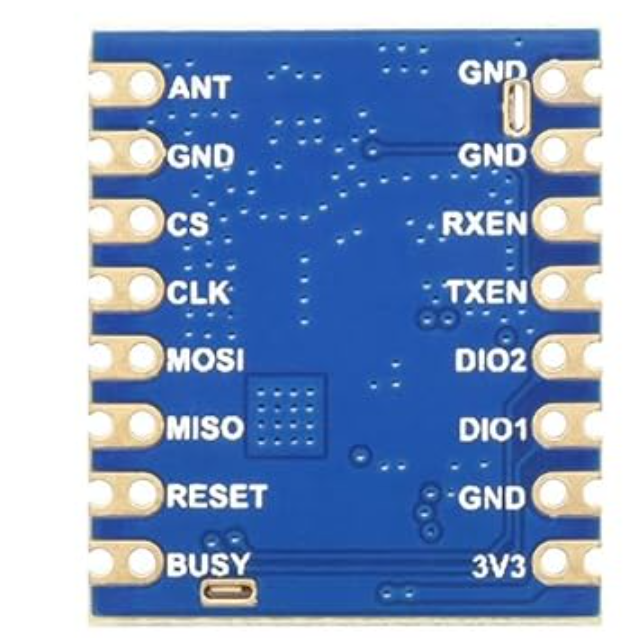
NOTE:
Busy <--> DIO0
NSS <--> CS
Mon 07 Apr 2025 05:47:34 PM EDT
kicad footprint and symbol for nice! nano here
schematic for nice! nano board here -- hopefully same as supermini
more docs for the nice! nano, explaining the pinout here
bluetooth module itself via adafruit is $13 here
or $8 via adafruit here
cold weather battery options here
cold weather node forum here
another meshtastic solar thread here
adafruit usb c plug breakout here
5V 1A output min 7V in max 36V DC DC Traco Power on digikey here
molex 10544 connector on digikey here
Mon 07 Apr 2025 08:17:59 PM EDT
I installed platformio as per this guide
The platformio quickstart is here
Meshtastic guide to building the firmware is here
how to connect the itsybitsy to the waveshare lora module:
